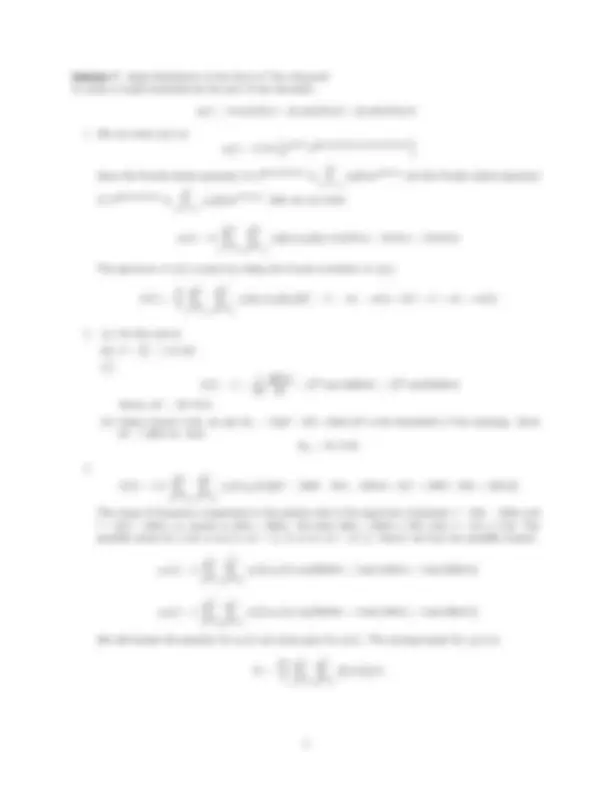



Estude fácil! Tem muito documento disponível na Docsity

Ganhe pontos ajudando outros esrudantes ou compre um plano Premium


Prepare-se para as provas
Estude fácil! Tem muito documento disponível na Docsity
Prepare-se para as provas com trabalhos de outros alunos como você, aqui na Docsity
Os melhores documentos à venda: Trabalhos de alunos formados
Prepare-se com as videoaulas e exercícios resolvidos criados a partir da grade da sua Universidade
Responda perguntas de provas passadas e avalie sua preparação.

Ganhe pontos para baixar
Ganhe pontos ajudando outros esrudantes ou compre um plano Premium
Comunidade
Peça ajuda à comunidade e tire suas dúvidas relacionadas ao estudo
Descubra as melhores universidades em seu país de acordo com os usuários da Docsity
Guias grátis
Baixe gratuitamente nossos guias de estudo, métodos para diminuir a ansiedade, dicas de TCC preparadas pelos professores da Docsity
Principios de COmunicação exercicios resolvidos
Tipologia: Exercícios
1 / 3

Esta página não é visível na pré-visualização
Não perca as partes importantes!


CCE 401: Communication Systems Spring 2017-
Due: 2018 Instructor: Dr. Mustafa El-Halabi
Solution 1. Instantaneous Frequency. We can write s(t) as s(t) = cos(200πt − 5 sin(2πt))
where θ(t) = 200πt − 5 sin(2πt). The instantaneous frequency is given by
fi (t) =
2 π
dθ(t) dt = 100 − 5 cos(2πt)
Solution 2. Two Tones. Let m 1 (t) = a 1 cos(2πf 1 t) and m 2 (t) = a 2 cos(2πf 2 t) be the two tones. The average of m 1 (t) and m 2 (t) are respectively P 1 = a
(^21) 2 and^ P^2 =^
a^22
a 1 = ± 7 a 2
The modulation indices for m 1 (t) and m 2 (t) are respectively β 1 and β 2 , given by β 1 = kf f^ a 1 1 and β 2 = kf f^ a 2 2. Since β 1 = 2β 2 , then a 1 f 1
a 2 f 2 ⇒ f 2 =
f 1 (1)
Using Carson’s rule, the bandwidths of the FM modulated signal using m 1 (t) and using m 2 (t) are respectively,
Bw 1 = 2(β 1 + 1)f 1 = W ⇒ β 1 =
2 f 1 −^1
Bw 2 = 2(β 2 + 1)f 2 = W ⇒ β 2 =
2 f 2
Since β 1 = 2β 2 , then 2 W 2 f 2
2 f 1
Replacing Equation. (??) in Equation. (??), we get
f 1 = 3W, f 2 =
Solution 3.Bandwidth of Angle-Modulated Signal.
u(t) = 10 cos(2 × 108 πt + 200 cos(2000πt))
The instantaneous frequency is
fi (t) =
2 π
dθ dt = 10^8 + 2 × 105 sin(2000πt) ⇒ fi (t) − fc = 2 × 105 sin(2000πt) ⇒ ∆f = 2 × 105 Hz
Since fm = 1000 Hz, then using Carson’s rule, the bandwidth os the angle-modulated signal is
Bw = 2(∆f + fm) = 2(201000) = 402 KHz
Solution 4.Modulation Index of FM Signal. The modulation index is given by
β = max |m(t)| × k fm
We can write m(t) as m(t) = A
2 cos
( (^) π 4 − 2 πfmt
The maximum of m(t) is max |m(t)| = A
β =
2 k fm
Solution 5.Power in FM Signal. The FM modulated signal can be written as
s(t) = 100 cos(2π × 108 t + 2 sin(20, 000 πt))
where β = ∆fmf = 2010 ×^104 3 = 2. The power of the FM signal si A 22 = 5000 W. Hence, 10% of the power is 500 W. We can form the following table
n f Amplitude = AJn(β) V P ow er = A 22 J n^2 (β) (W ) − 3 100 MHz − 30 KHz AJ− 3 (2) = − 12. 9 83. 2 − 2 100 MHz − 20 KHz AJ− 2 (2) = 35. 3 623 − 1 100 MHz − 10 KHz AJ− 1 (2) = − 57. 7 1664. 645 0 100 MHz AJ 0 (2) = 22. 4 250. 88 +1 100 MHz + 10 KHz AJ 1 (2) = 57. 7 1664. 645 +2 100 MHz + 20 KHz AJ 2 (2) = 35. 5 623 +3 100 MHz + 30 KHz AJ 3 (2) = 12. 9 83. 2
From the table, the frequency components which has a power at least 10% of the unmodulated carrier power are fc ± fm and fc ± 2 fm.
Solution 6. Frequency Deviation
u(t) = 2 cos(2πfc t − 20 cos(1000πt) − 10 cos(2000πt)) = 2 cos
2 πfc t + 2πkf
∫ (^) t
0
m(τ )dτ
By inspecting, we get
2 πkf m(t) = −20(− 1000 π) sin(1000πt) − 10(− 2000 π) sin(2000πt) Since kf = 10^4 ,then we get m(t) = sin(1000πt) + sin(2000πt)
∆f = 10^4 max
∣ sin(1000πt) + sin(2000πt)
Let 1000πt , x. Since the maximum of sin(x) + sin(2x) is roughly 1.76, then
∆f = 10^4 × 1 .76 = 17600 Hz